Evening in Pietrasanta
Having a plan is not suitable for me, having a trip works all the time but I cannot find the right hour, not today, not tomorrow, nor anytime!
So I said to myself, let's go with the flow, even if I had a straight plan (again) in my mind - visiting the city during the day, have a little walk in the mountains and do hiking - but it wasn't for me it turns so...
The little trip I had, took me all that evening and stretched vertiginously towards a pleasant night on the old streets of the old center of Pietrasanta. And I strongly believed in a great adventure among the old "telling stories" buildings.
First thing I've seen there was not the Duomo - as we expected or as I arranged the presentation for you - but a beautiful well worked door in the middle of the street (that street that leads you to the big square with all the monuments) which open arms welcome you to a beautiful ceiling of umbrellas.
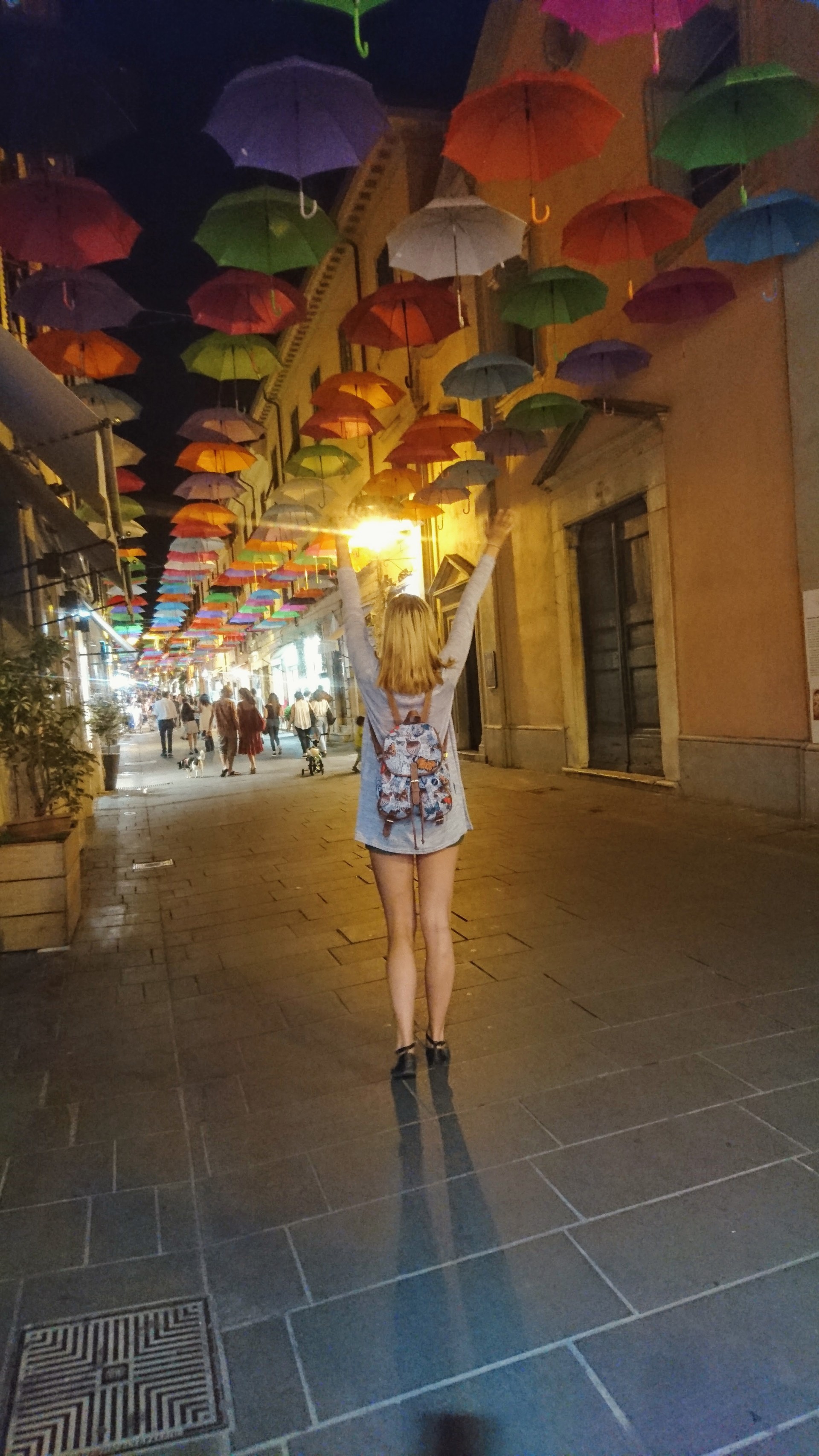
As you can see, the light came from the shops - from clothes to jewelry, books, perfumes or the beloved Italian food - and I followed that light to the end of the street and beginning of San Martino square. Is not like following the light to something, like old stories, but being curious about every sparkle in here!
I went straight to the Duomo to take pictures of it and read some information, write down everything - and only after these I sit on a bench inside and stare at every architectural detail, painting, and statue.
Duomo di San Martino
This majestic cathedral is the architectural element dominating the center of beautiful rectangular piazza of the same name, the fulcrum of civic life in Pietrasanta.

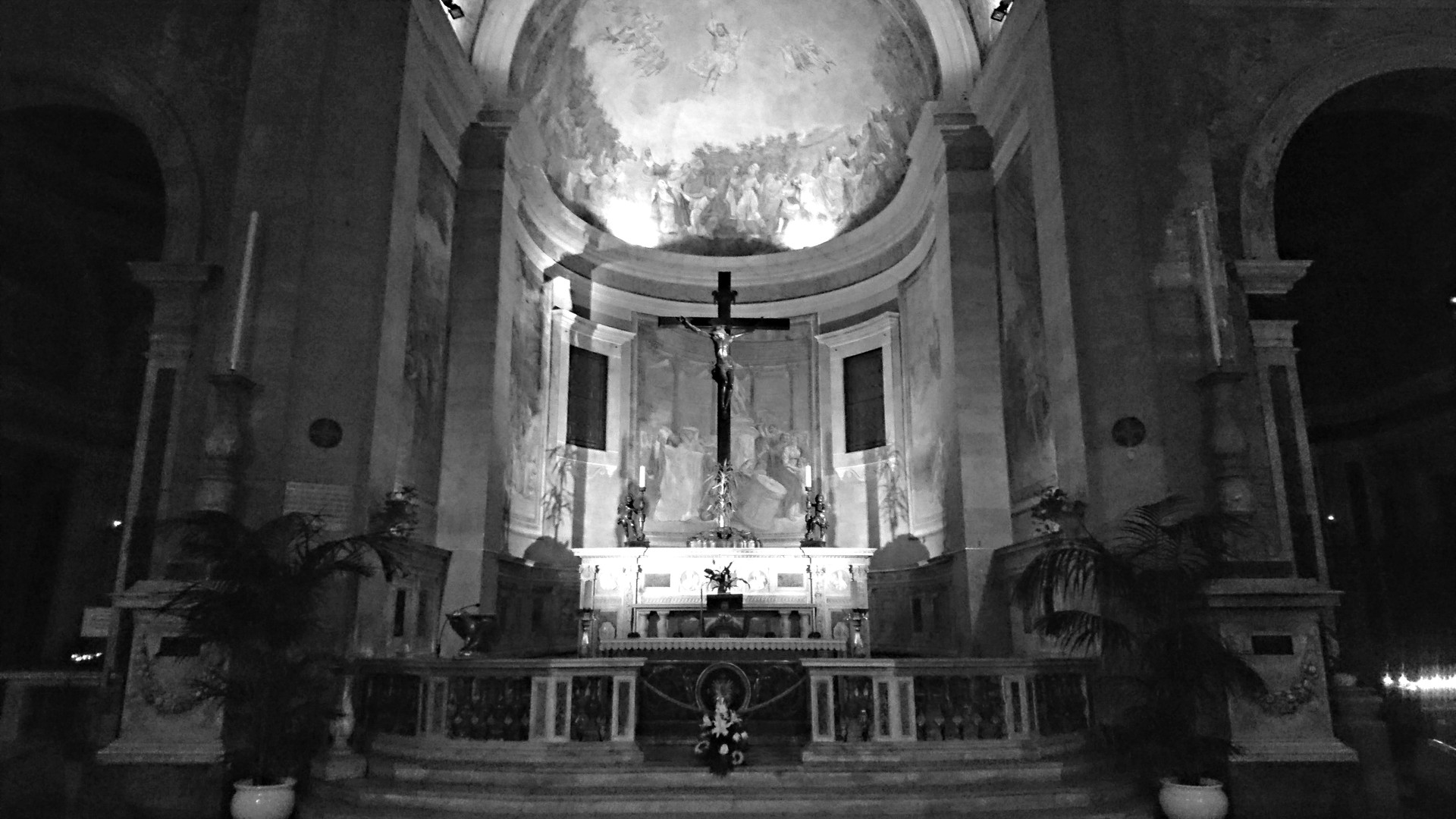
- construction began in the XIV century on the site of a pre-existing Church of San Martino; in 1387 it was elevated to the rank of Provostship and Collegiate Chapter;
- the elegant marble facade with three portals is adorned with a lovely rose window, various bas-reliefs from the XIV and XV centuries and several coats-of-arms of the city's rulers;
- the interior, restored more than once over the centuries, now has a decidedly XVII century aspect; the frescoes of the nave and Dome are from the 1800's;
- as a particular note, the white marble holy water stoup, and candelabras at the sides of the presbytery, by the sculptor Stagio Stagi - the XVI century - and the fine composite pulpit with a pedestal by Lorenzo Stagi -1504 - the hexagonal chalice by Donato Benti - 1508 - and monolithic staircase by Andrea Baratta of Carrara - 1696-
- the chapel "of the Virgin" is home to the venerated late-Gothic panel of the Virgin with Child and Saints John the Baptist and John the Apostle by unknown XV century painter; it is unveiled only on special occasions
- alongside the cathedral stands the brick bell tower, about 36 meters height, an unfinished XV-XVI century work by Donato Benti with an admirable helicoidal staircase in the interior
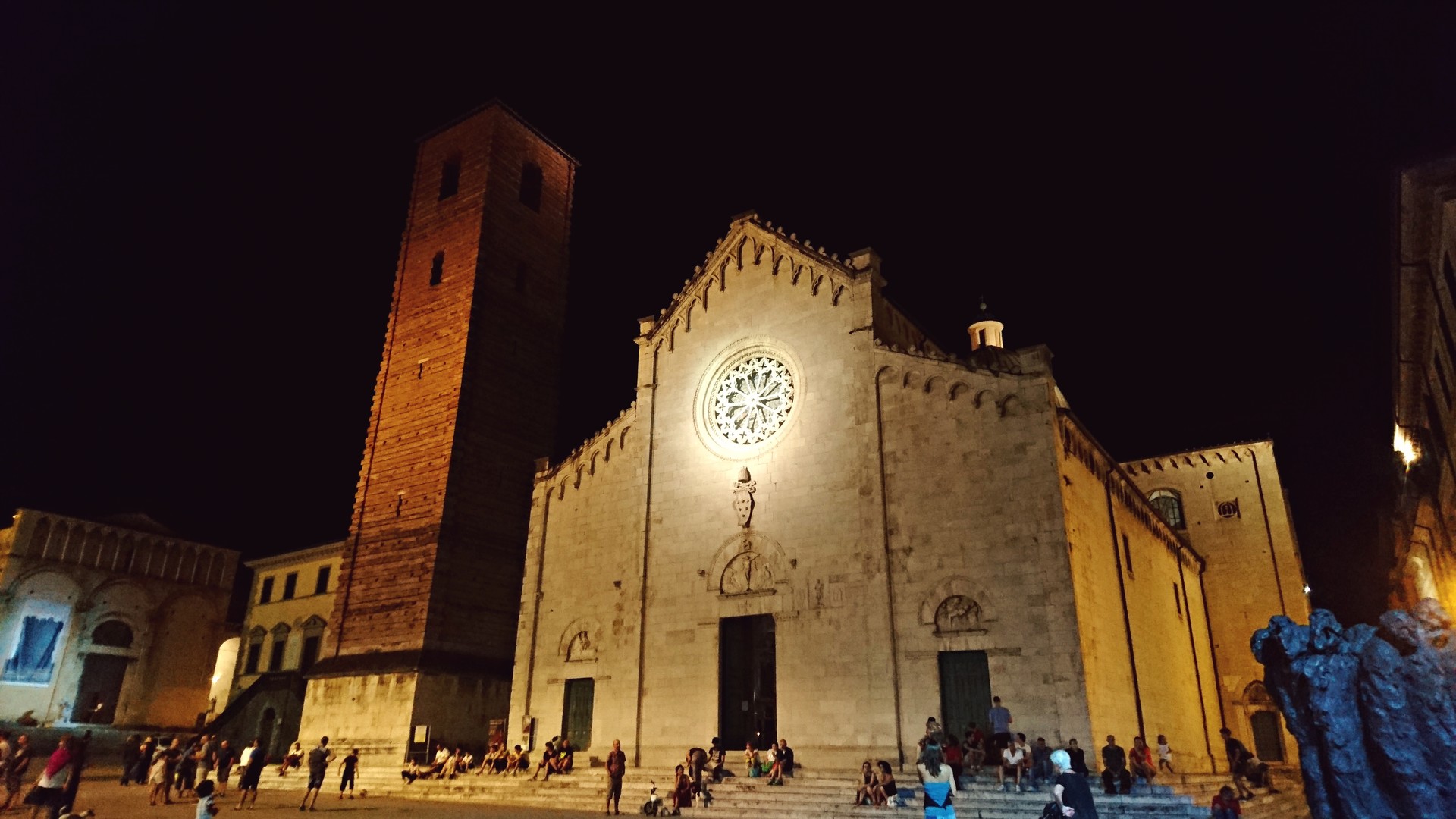
Right next to the Duomo, an old story of a high tower rises up to touch the sky along with the tall brick construction that welcomes us as gently as it welcomed the elder generations since the beginning of the XVI century.
so the Bell Tower came with this:
- so-called the "tower of bricks" represents the historical symbol of the town
- is sixty "Braccia" high or 36,000 meters and it was built from 1519 onward
- was planned under the supervision of the Florentine architect Donato Benti in the place of a previous construction used as a military lookout in XV century
- inside the bell tower, there is an extraordinary self-supporting spiral staircase that reaches the belfry in three complete turns and has about one hundred steps
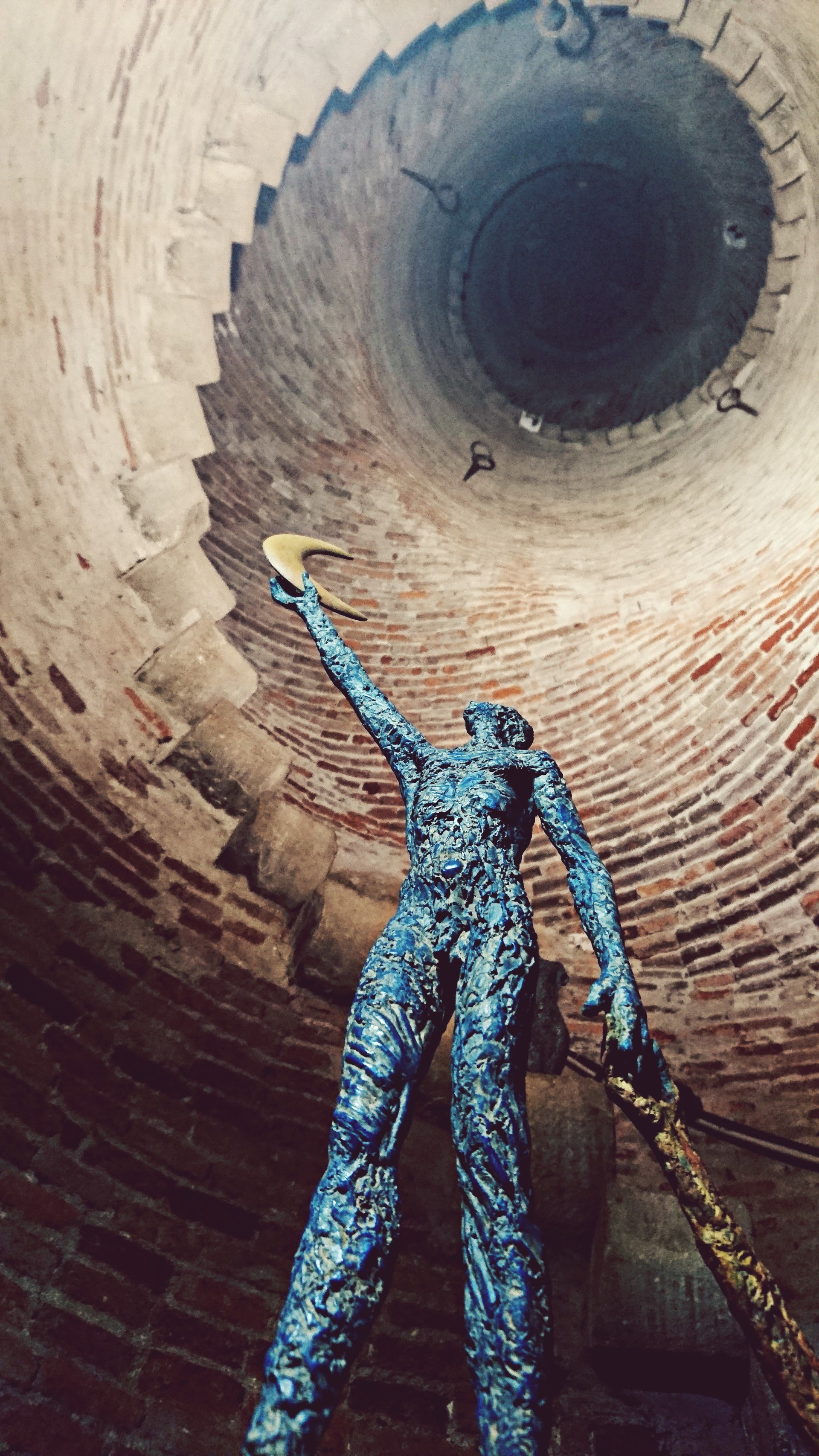
This daring architectural design, of remarkable visual impact, and the particularity of the building technique, have brought us to suppose that Michelangelo Buonarroti, whose proxy was Benti, contributed to the planning of this project.
The final work remains unfinished because the expected external cover in marble was never accomplished, with the exception of the base.
The Lunar Enigma of Isidore
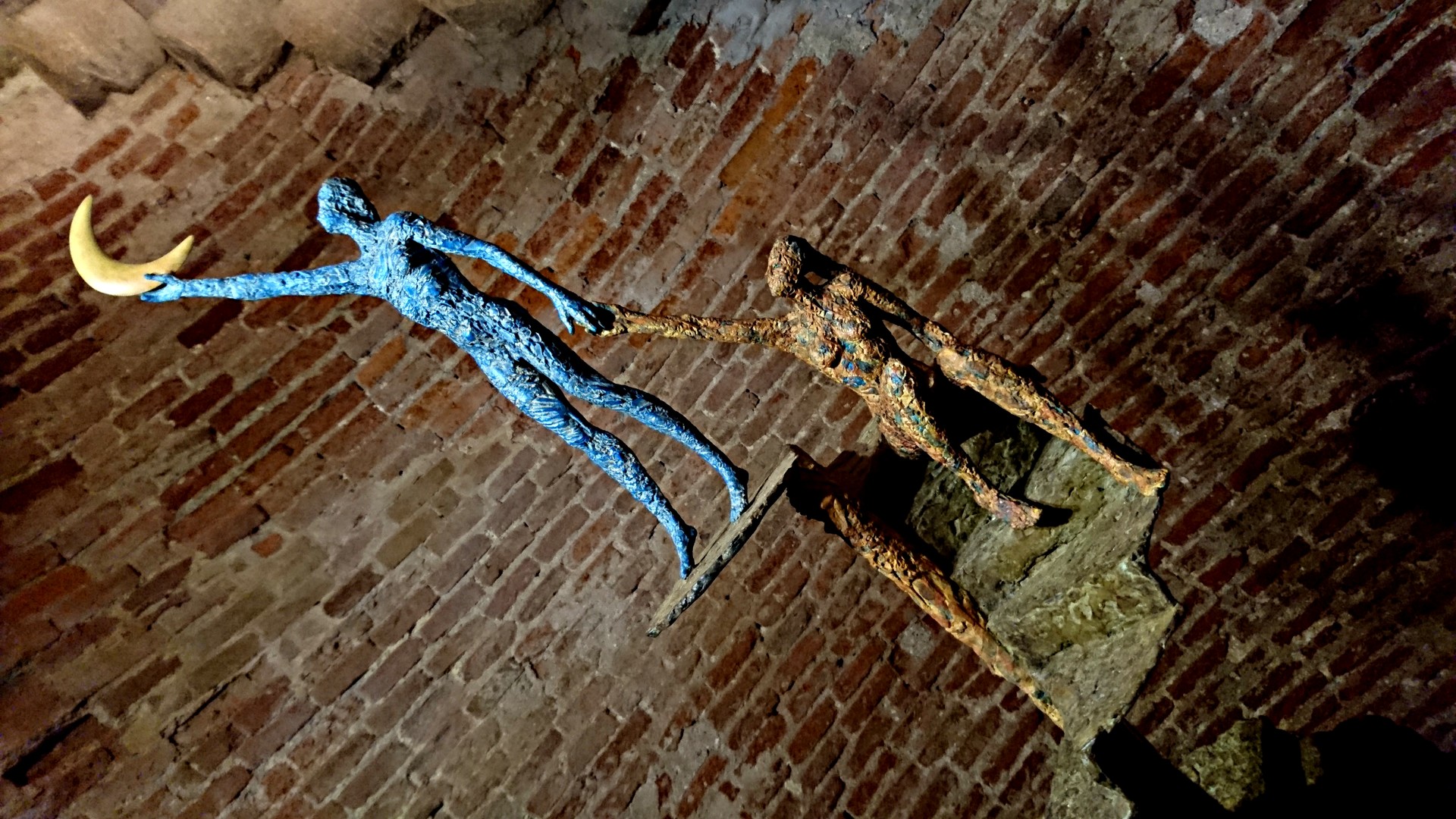
How many ways round in circles to finally surprise the Moon?
The Enigma by Isidore Ducasse is Man Ray's photograph of a mass, a parcel, a sculpture - one cannot really tell as the object is covered by a blanket and tied with a string.
Furthermore, Isidore Ducasse is the real name of the Comte de Lautreamont, who wrote the prose poem Les Chants de Maldoror. Again, a way round in circles to get to poetry. A game, between name, pseudonym and poetic "filiation". We could say it is a Day Moon mirroring the Sun while hiding its own beauty and light at night. Up there, within it, rests the reason that once belonged to Orlando, Ariosto's legendary knight, as the Moon hides the magic of its spotted territory from Galileo.
We know that, despite man's conquest in 1969, it influences both tides and births. And so, we obediently dedicated the Mayan 13-moon calendar to it, here comes the werewolf, searching for maids to tear to pieces in the forest.
This is just to tell the magic hold the Moon has and has had, on artists and poetry up to Man Ray's hiding, which poses a fascinating Enigma, going beyond the couple - Moon and Sun - so that we look inside ourselves.
And this is the reason why Giacinto Bosco's sculptures are looking at the Moon. They are yearning for the Moon, individually and as a couple of lovers.To discover the Moon inside Ourselves, as a hidden side of both love and happiness.
Palazzo Moroni and the "Bruno Antonucci" Archaeological Museum of Versilia
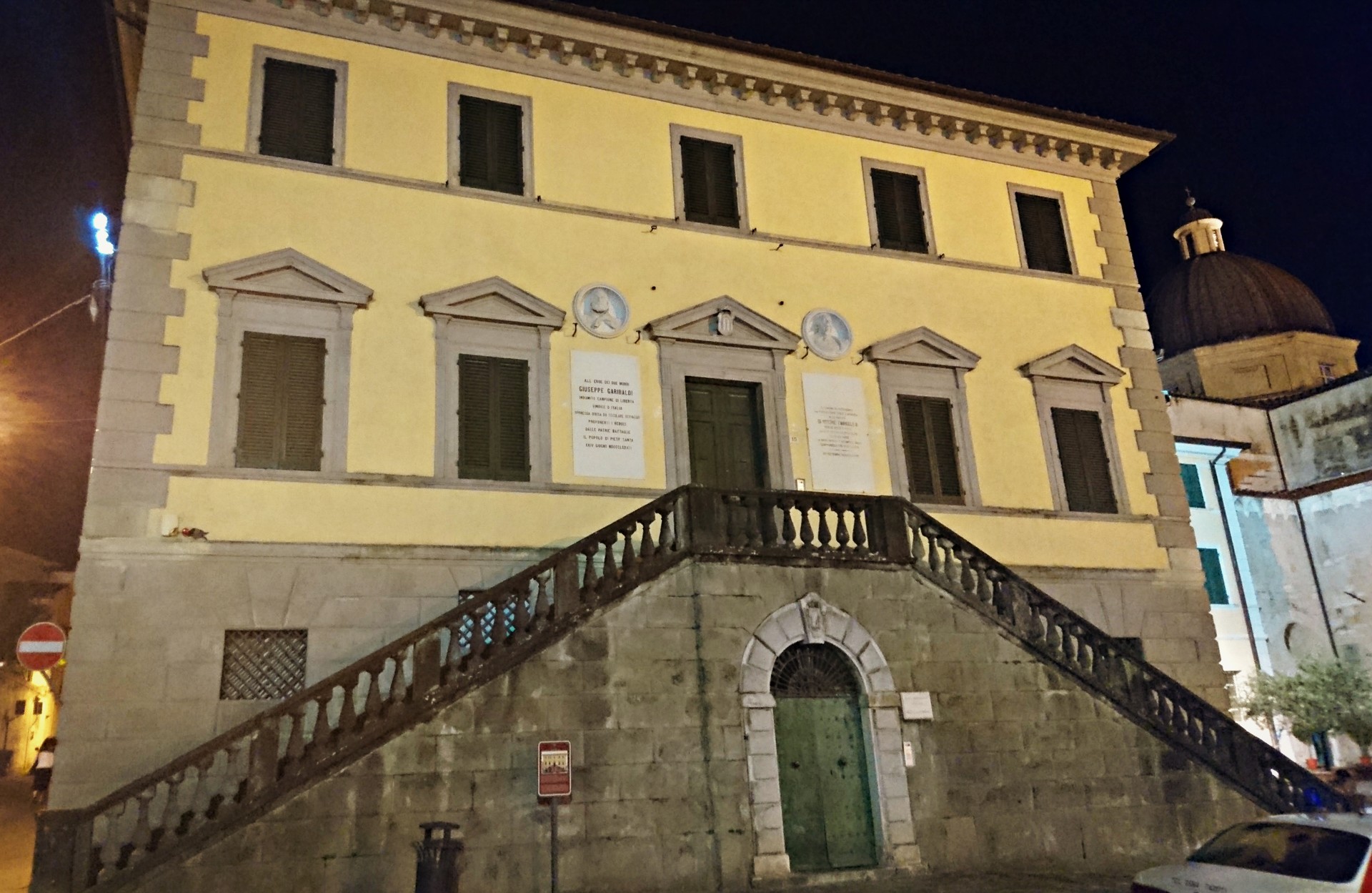
- Home of the Chancellery from the mid-1600's onward, and enlarged and embellished in the XIX century, this building was the Pietrasanta city hall until about 1940.
After having played host to the city of the City Historical Archives, it will, upon completion of current restoration work, become the venue of the "Bruno Antonucci" Archaeological Museum of Versilia.
This collection, currently viewable by appointment at the Depository in Via Guglielmo Marconi, counts a myriad of finds from throughout the Versilia territory, from prehistory to medieval times, with the addition of an interesting collection of Renaissance ceramic.
Jorgen Haugen SORENSEN and his magnificent exhibition - The Crowd
"This exhibition is the result of two years of work where I concentrated on the way in which to work with the clay. I have tried to let the clay become more clay than motif. In any case, what the sculptures recount is important for me because I want to describe the situation we all find ourselves in.
But the problem is, what we experience here and now is seen through a veil of frightening details while the big picture gets lost. It is this duality that I try to show by modeling the sculptures the way I do.
To sit and fiddle with images made from mud is an activity that man has been doing since the dawn of time. We have always created imagery of our thoughts and actions - I wanted to tell a dark story in white. I chose white glaze on clay so that the story would be told as simply as possible. The white glaze stands in contrast to the motif: an image of our world that is violent and filled with horror. We see it or sense it, but cannot accommodate the realism from the point where we stand. They are events that take place around us and with us, and that are hanging over us like a cloud in all their incomprehensibility.Since each of us perceives the world differently, I have tried to let the figures exist openly between clay and picture, so that each observer can form his or her own motif.
Just like when I was a young boy on holiday with a peasant family and I had to buy a gift for my mother, who had her birthday in the middle of the holiday and I went to the shop to choose a small porcelain vase. The writing on it was Greetings from Endelave - made in China. For me, it was the most beautiful thing I had ever seen. I hope that in what I have created here, each one of you will find your own image." - Jorgen Haugen Sorensen

Sala Putti
"The series of sculptures named Portrait of an old agreement was originally exhibited in 1972. With this work, Jorgen Haugen Sorensen abandoned the classical principles of construction and separated the individual elements of the sculpture. He left the fragmented pieces directly on the floor without the base and in favor of the sculpture's playful dialogue on the open floor.
With unusual shapes, the sculpture was no longer one whole entity, but a fragmented piece, which the viewer was able to walk in between and where a dialogue between the different fragments of the sculpture, the room, and the viewers became possible. Departing with the sculpture of the time was also a parting with monumentality or tributes to national authorities and regents, had strong references, and in order for the sculpture to develop and become 'new' again, Haugen Sorensen deconstructed the self-contained shape. The fragmented sculptures are cast in bronze and characterized by rough mountings with a continuous expression of movement and stand out as 'personalities' or archetypes.
The sculptures have been patinated in an ochre color, and bear the look of rusty piles of metal, not the refined bronze of which they are made, and one suspects a thinly veiled comment being the basis of this distortion." - Nina Wohlk
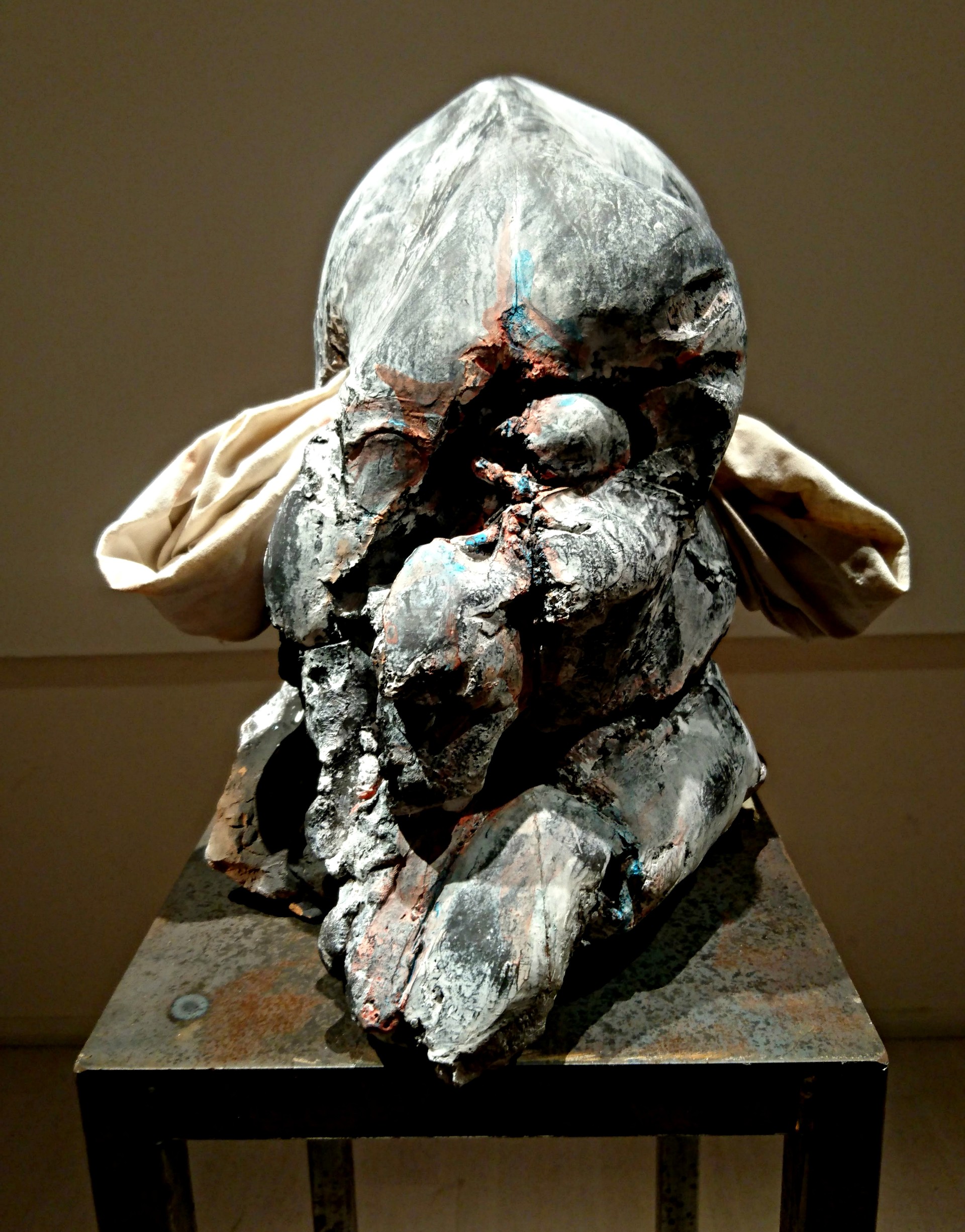

Sant'Agostino, the garden
"After Jorgen Haugen Sorensen settled in Pietrasanta in 1968, travertine, marble, and granite became his covered medium of expression, often used as a means to depict and inner demonic encounter between the soft and organic against the cold and brutal surfaced of the structural systems. A direct reference to human and architecture rendered in a series of monumental sculptures.
From the late 1970s and the years to come, Haugen Sorensen used geometric shapes in contrast to the organic as in The house who licks the sunshine and Municipal sculpture. Eventually monumentality more prevalent, but still with expressive undertones. The commissions have been many both in Denmark and abroad. Tasankara in Ankara and The house that rains at Sankt Hans Torv in Copenhagen are both basal expression of balance and precision along with the use of rough fracture surfaces show Haugen Sorensen's desire to reach an expression of simplification." - Lars k. Moller (curator of "The Crowd" and director of Bornholm Art Museum)

Marzocco or Liberty Column and Monument to Leopoldo II
Originally located at the center of Piazza facing the bell tower of the cathedral, the column bearing the figure of the Marzocco Lion, the heraldic symbol of Florentine domination, was sculpted by Donato Benti in 1514. It was removed in the mid-1800's and re-erected in its present position in 1903; the inscription added to the base at that time names it as "Liberty Column".
The fountain, decorated with an ancient coat-of-arms of the Florentine Republic (hence the name) was crafted in the XVII century...
Photo gallery
Want to have your own Erasmus blog?
If you are experiencing living abroad, you're an avid traveller or want to promote the city where you live... create your own blog and share your adventures!
I want to create my Erasmus blog! →























Comments (0 comments)